Keeping a plant, such as, a tree, in a small pot can be challenging but using some of the techniques of bonsai can help dwarf a plant and keep it small. Regular pruning, both above ground and of the roots, is required. This technique is both an art and a science. Here a weeping fig is used to demonstrate the technique.
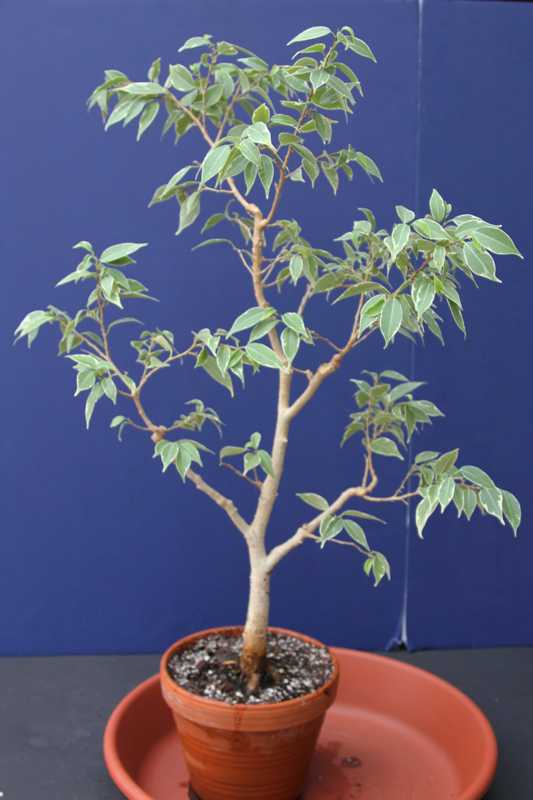
|
Select a plant
Select a plant that you want to keep small and growing in the same size pot. (Here, a weeping fig tree has been selected.) It has been growing in this pot for more than 7 years and has been kept small by pruning regularly.
|
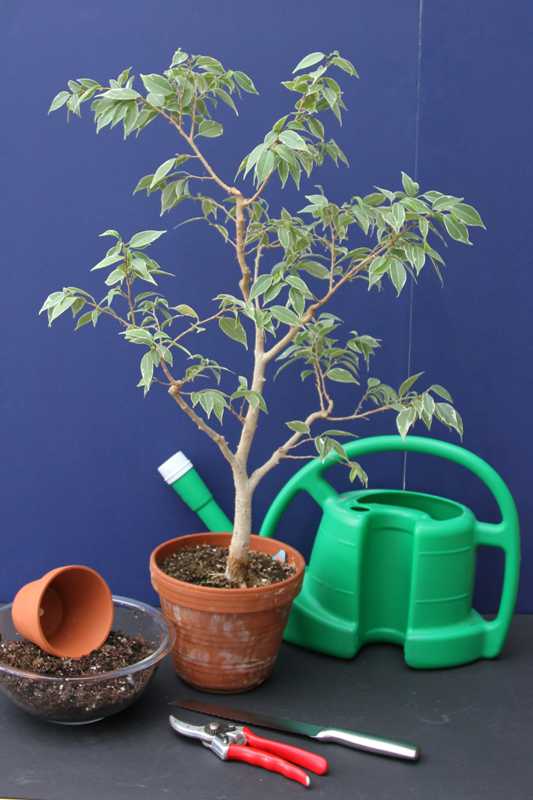
|
Assemble the materials
1. Water (room temperature)
2. Pot (the same pot it is in)
3. Potting soil
4. Container to hold soil & water
5. Pruners
6. Knife (scalloped edge)
|
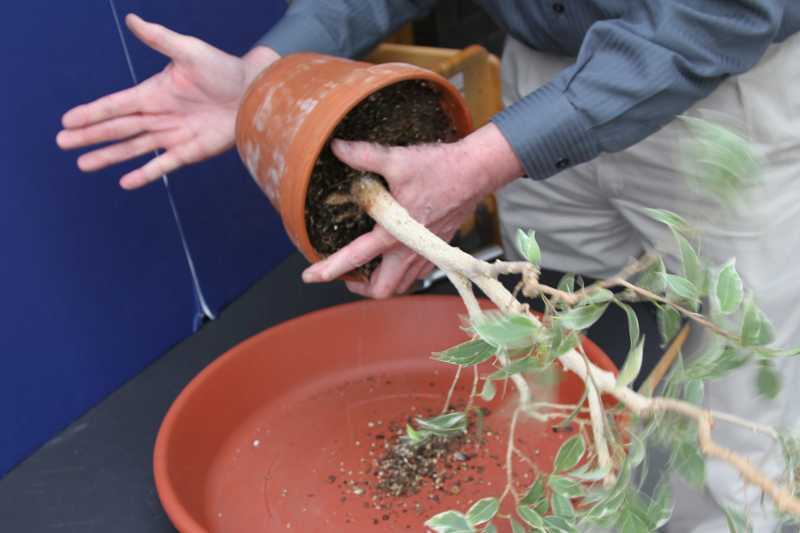
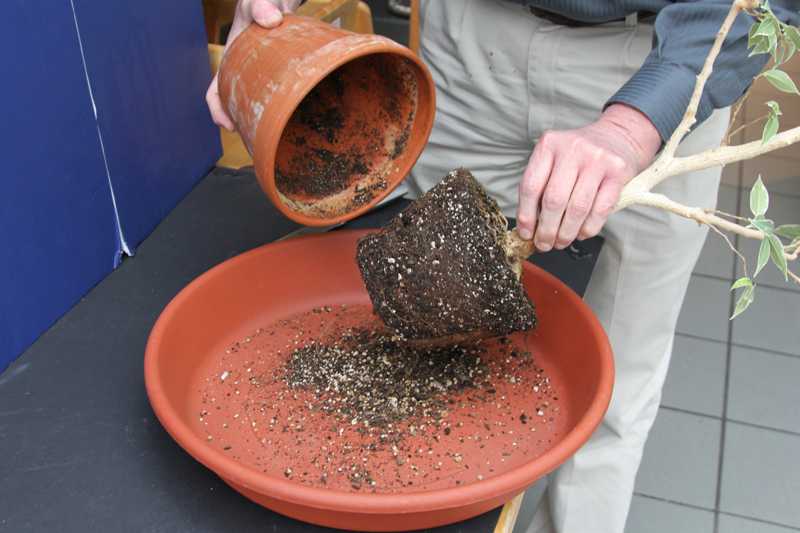
|
Remove the plant from the pot
Tap the bottom and sides of the pot to loosen the plant in the pot. This may take a few tries. Be careful not to pull on the trunk too hard as this could damage the plant. When loose, tip it out of the pot.
|
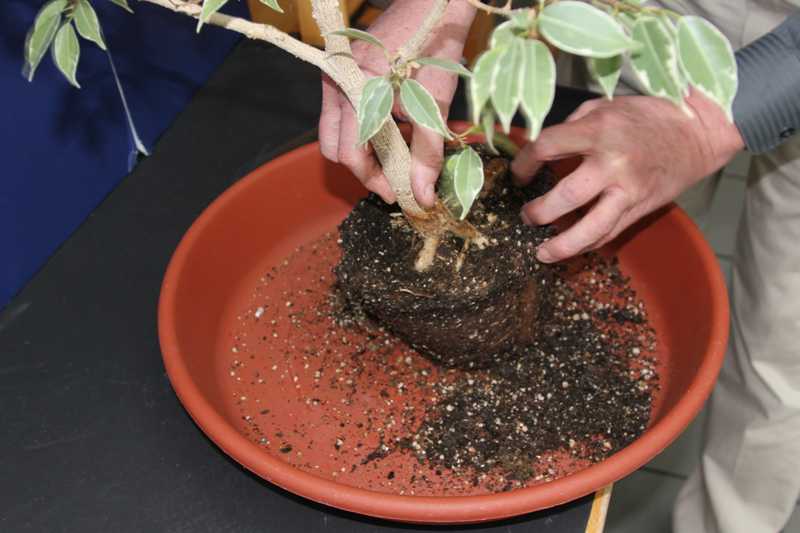
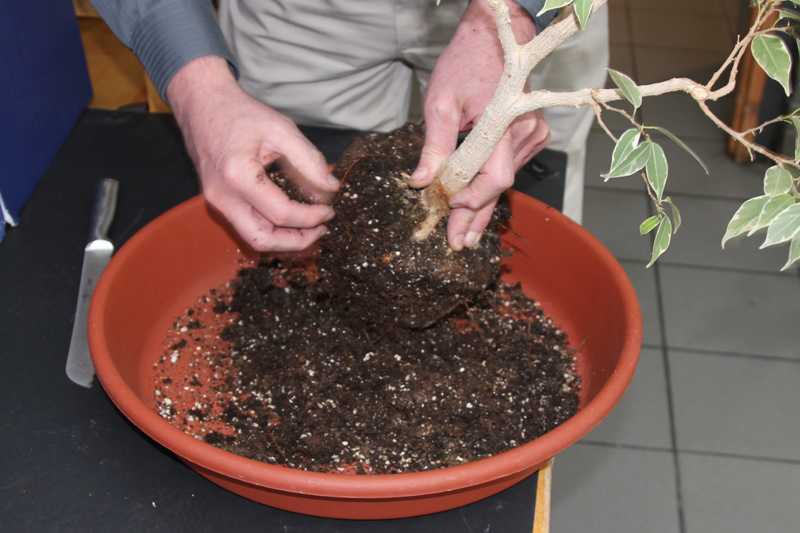
|
Remove soil from the top, sides and bottom of the root ball
Remove soil from around the root ball. In particular, remove the top soil as fertilizer salts and minerals can accumulate in this area (they give the soil surface a white appearance). This soil should be replaced with fresh soil. Also remove some soil and fine roots all around the root ball.
|
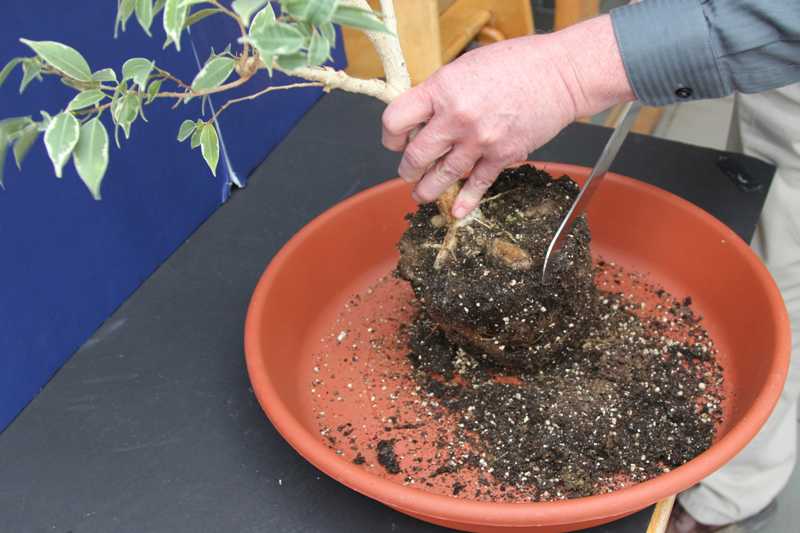

|
Root prune
An inexpensive stainless steel bread knife (scalloped-edge) works well for shaving some soil from the root ball. In this case there are a couple of large roots. Either work around them or remove them if sufficient smaller roots are present. Removing larger roots as they form is commonly done on bonsai plants to encourage smaller feeder roots. In this case, the large roots have been left intact as removing them at this stage would have removed too many roots. Eventually, the tree may need a larger pot if these large, older roots cannot be pruned out later.
|
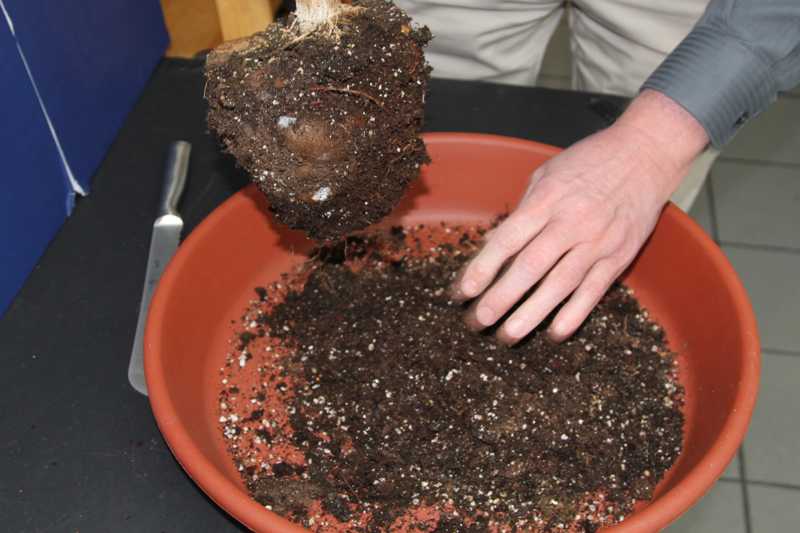
|
Root ball ready to return to the pot
With some old soil removed all around the root ball, it is now ready to be repotted with some fresh soil. This will encourage the formation of new, young and vigorous roots.
|
|
|
Scrub the pot well
Clean the pot well both inside and out. Remove any white, fertilizer and mineral deposits on the pot. A non-metalic pot scrubber or paint remover pad works well.
|
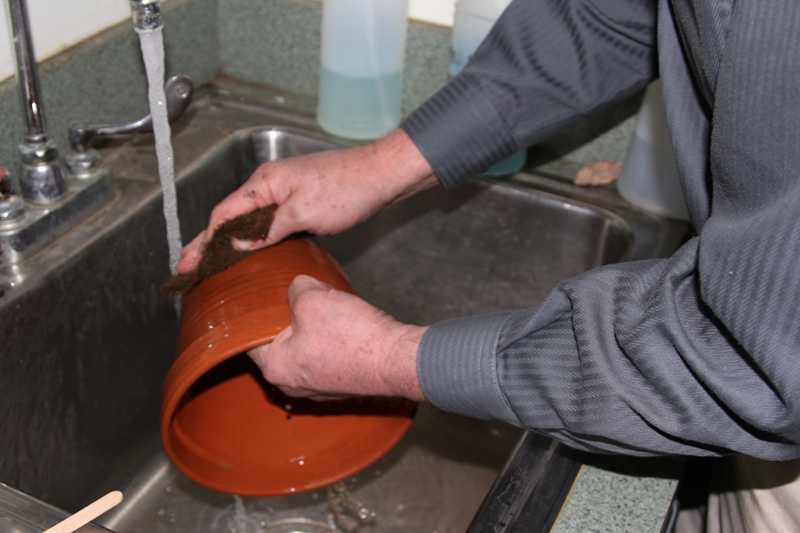
|
|
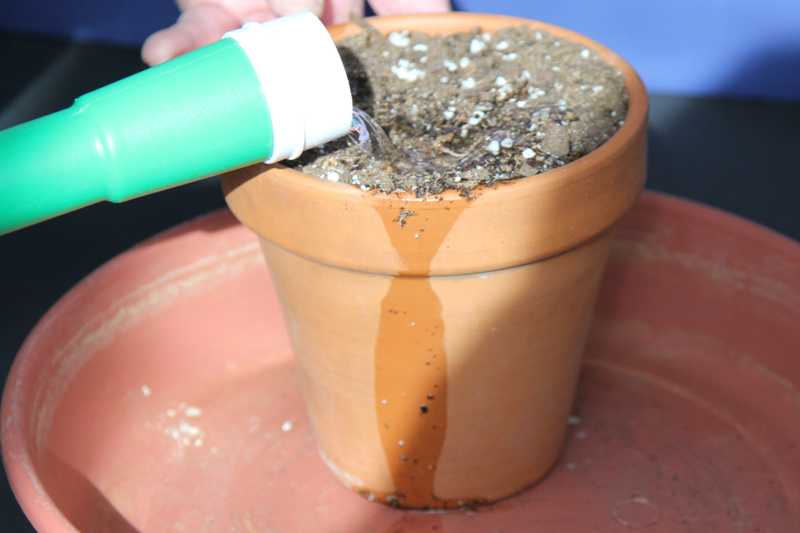
|
Avoid watering mistakes
The potting mix needs to be thoroughly moistened. Placing dry potting soil into a pot and watering does not work well. The water will overflow the pot and the potting soil will remain dry underneath.
|

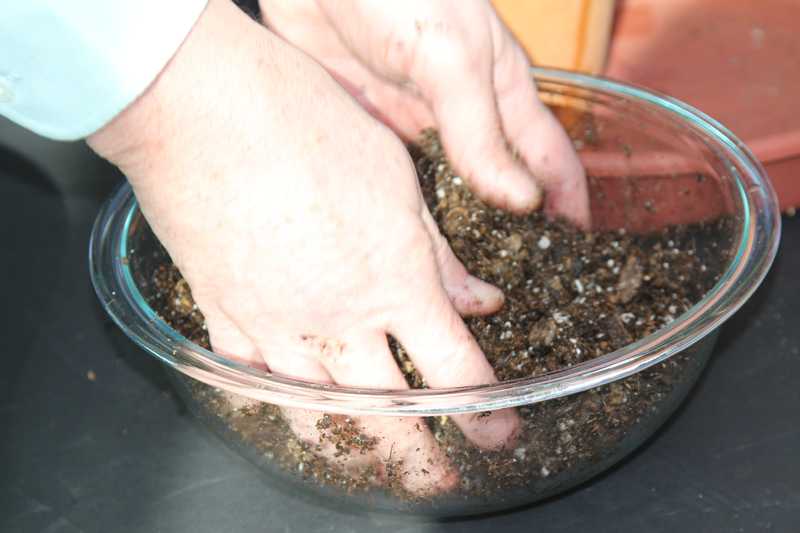
|
Moisten potting mix
Place the potting mix in a container and add tepid water sparingly. Mix thoroughly. Continue adding water and mixing until the potting mix is moist but not soggy. Room temperature or tepid water works better than cold water. |
|
|
Add soil to bottom of pot
Place enough soil in the bottom of the pot to raise the plant to its height in the pot before root pruning. |
|
|
Fill in with soil around root ball
Add soil around the root ball gently pressing it down to fill voids.
|
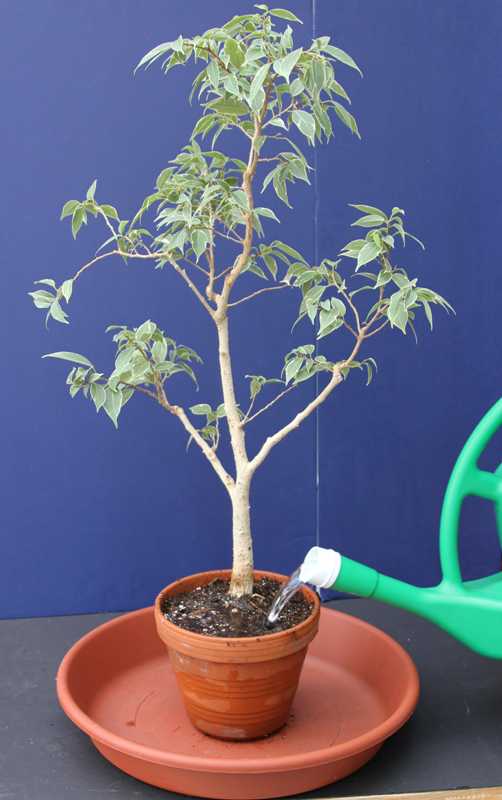
|
Water with tepid water
Finally, water all around the top of the soil to settle the soil around the roots. Extra water should run out the bottom of the pot when the soil is fully saturated. Empty any water in the saucer before the plant is moved back to its growing location.
|
|
|
Shorten branches by cutting back to an existing shoot
Cut back shoots to an exising side branch to shorten the branches and make the plant smaller.
A white, latex sap will exude from a weeping fig. This is normal and should not cause concern. Note how the cut was made back close to an existing branch - a stub was NOT left.
|
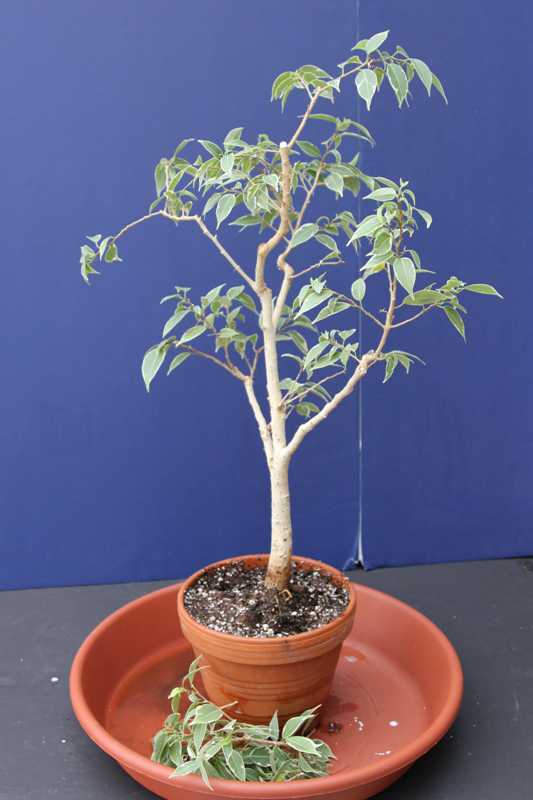
|
Dwarfed plant ready to return to its growing location
The plant is now ready to be set in its original saucer and returned to its normal growing location. The trimmings can be disposed of, or, if you like, could be treated as cuttings to root and start a new plant. See "Propagating Plants from Cuttings."
|